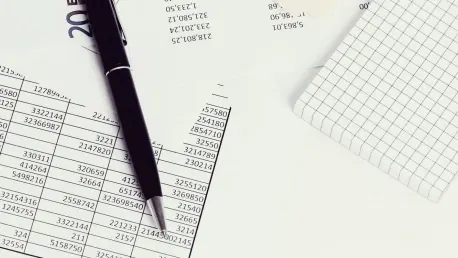Filing taxes can often be a daunting process, particularly for entities required to file ITR-7 under sections 139(4A), 139(4B), 139(4C), or 139(4D) of the Income Tax Act, 1961. However, recent advancements in e-filing utilities by the Income Tax Department of India promise a simpler and more efficient process. Let’s delve into how these updates benefit the users.
Simplified User Experience
Streamlining the Filing Process
The updated e-filing utilities released on 8th July 2024, are specifically designed to simplify the often complex tax filing process. One of the major pain points for ITR-7 filers, which include trusts, political parties, and other specified entities, is the intricate procedural requirements. The new user interfaces are intuitive and easy to navigate, substantially reducing the time and effort required to complete the filing. By incorporating a design that’s both user-friendly and efficient, the Income Tax Department aims to remove hurdles that have traditionally made tax filing a cumbersome task. The new system focuses on reducing the overall steps involved, thus enabling even those with limited technical knowledge to complete their filings with minimal hassle.
Additionally, the updated utilities offer step-by-step guidance throughout the process. This feature ensures that users are less likely to miss important sections or make errors. The streamlined flow, combined with an intuitive layout, eases the overall user experience. As a result, the time required for tax filing is significantly reduced, which is a significant advantage for entities handling extensive financial records. With fewer complexities and a more straightforward approach, the process becomes not just quicker but also less stressful for users. The ultimate goal is to make compliance easier, thereby encouraging more entities to file their returns accurately and promptly.
Improved Compliance
Another noteworthy feature of the updated utilities is their alignment with the latest tax regulations. This integration not only ensures users stay compliant with ever-changing tax laws but also minimizes errors that could lead to penalties. Automated checks and prompts guide users through mandatory fields and sections, making the entire process smooth and error-free. Each section is equipped with validation mechanisms that instantly alert users if something is amiss, enabling real-time corrections. By proactively identifying mistakes, the utility helps in reducing the chances of costly errors and legal repercussions related to tax compliance.
Furthermore, these updated utilities are designed to flag discrepancies and inconsistencies that might otherwise go unnoticed. Detailed verification processes are built into the system to ensure that every piece of information entered is both accurate and complete. These verification steps are crucial for entities like trusts and political parties, where the accuracy of financial documentation is paramount. The intention is to foster an environment of transparency and accountability without adding unnecessary complexity to the filing process. This alignment with the latest tax regulations also helps in simplifying the audit process, as records are maintained in a more organized and compliant manner.
Diverse Platform Support
Multi-Platform Accessibility
Understanding that users operate on various devices, the Income Tax Department has rolled out updated utilities for multiple platforms. These include versions for Windows, MAC, and an Excel-based utility, all released simultaneously. This diverse platform support ensures that users, regardless of their preferred operating system, can access the updated tools without hassle. The cross-platform availability signifies the department’s commitment to inclusivity, making sure that users are not restricted by the type of device they own. Every user, irrespective of their system preferences, can benefit from the advanced features offered by the updated utilities.
The simultaneous release across platforms also ensures that there are no delays or discrepancies in terms of available features. Users on different systems receive the same tools and capabilities, contributing to a uniform experience. This consistency is critical in providing reliable and predictable filing experiences for all users. By covering multiple platforms, the Income Tax Department aims to cater to a wide range of user preferences and technical requirements, making tax filing more accessible and convenient. This move towards inclusivity ensures that all specified entities, including trusts and political parties, can utilize the utilities with ease.
Technical Specifications
The technical details are tailored to meet user requirements and ensure seamless compatibility. For instance, the Windows utility is Version 1.1.1 with a size of 100 MB, while the MAC version is also 1.1.1 but slightly larger at 117 MB. The Excel-based utility, Version 1.1, is significantly smaller at 4.68 MB, making it suitable for users who prefer lightweight applications. These specifications help users prepare their systems accordingly for an optimal experience. Users can easily download and install the utilities without worrying about significant storage or performance issues, thanks to these considerate technical provisions.
Moreover, the different versions are optimized to work efficiently on their respective platforms, ensuring smooth and uninterrupted performance. For users who prefer the Excel-based utility, its lighter footprint means it can run on less powerful systems without sacrificing functionality. These thoughtful considerations highlight the department’s dedication to providing user-centric solutions that cater to diverse needs. The provision of detailed technical specifications also helps users identify the most suitable version for their requirements. This, in turn, streamlines the setup process and allows users to focus on the actual task of tax filing without technical hiccups.
Enhanced Compliance Features
Transparency and Accuracy
The new e-filing utilities are equipped with features that promote transparency and accuracy. Automated verification processes, real-time validation checks, and embedded compliance prompts ensure that the data entered is correct and complete. This reduces the risk of discrepancies and enhances the overall quality of the tax returns filed. Each step in the filing process is meticulously designed to assist users in entering data accurately, thus avoiding common errors that could result in penalties or audits. By ensuring high levels of data integrity, these features contribute significantly to a smoother and more reliable tax filing experience.
Additionally, the real-time validation checks function as a second pair of eyes, scrutinizing the entries as they are made. This proactive approach ensures that mistakes are caught early, allowing immediate corrective action. The automated nature of these checks means that users can rely on the system to flag issues that they might overlook manually. This not only reinforces accuracy but also builds confidence in the integrity of the process. By promoting transparency and fostering a sense of accountability, these enhanced compliance features underscore the importance of accurate and honest reporting in the tax filing process.
Up-to-Date Tax Regulations
By integrating the latest tax regulations, these updated utilities provide users with peace of mind. They ensure that the filings are not only accurate but also in line with the most recent legal requirements. This proactive alignment helps avoid the pitfalls of non-compliance and keeps users updated with minimal effort on their part. The utilities are designed to adapt to changes in regulations automatically, sparing users the need to manually update their filing processes. This seamless adaptation to new requirements ensures that users remain compliant at all times without having to stay abreast of all regulatory changes.
Furthermore, the integration of the latest regulations means that users are less likely to encounter legal issues arising from outdated compliance methods. The utilities incorporate all the recent updates and amendments, ensuring that every filing adheres to current laws. This not only simplifies the filing process but also significantly reduces the risk of legal complications. By consistently integrating new regulations, the utilities guarantee that users can file their returns with confidence. This focus on up-to-date compliance underscores the Income Tax Department’s commitment to promoting transparency and accuracy in tax filings.
User Engagement and Feedback
Encouraging User Interaction
Although the comments section in the article might show no activity, it’s evident that the platform encourages feedback and interaction. User engagement is a critical aspect as it offers valuable insights into what works well and areas that may need improvement. Engaging users in the feedback loop ensures continuous enhancement of the utilities. Active user participation helps in identifying bugs, suggesting new features, and refining existing functionalities. By fostering a collaborative environment, the Income Tax Department can create solutions that are not only effective but also user-friendly.
Moreover, a strong feedback mechanism provides an avenue for users to voice their concerns and share their experiences. This interaction is invaluable in understanding user pain points and addressing them promptly. The dedicated channels for feedback ensure that every user comment is heard and considered, paving the way for timely adjustments and enhancements. Encouraging user interaction also fosters a sense of community and shared responsibility. Users feel more invested in the process when their input is valued and acted upon, which in turn improves their overall experience with the utilities.
Continuous Improvement
Feedback mechanisms allow the Income Tax Department to update and refine their tools regularly. As users report bugs or suggest improvements, these inputs are integrated into future versions, resulting in utilities that evolve to meet user needs more effectively. This cycle of continuous improvement ensures that the e-filing process becomes incrementally easier over time. Regular updates and refinements mean that users can expect better performance, enhanced features, and resolved issues with each new version. This approach keeps the utilities relevant and efficient, meeting the evolving needs of users.
Additionally, the continuous improvement model emphasizes the department’s commitment to providing the best possible service. By actively seeking and implementing user feedback, the department ensures that it remains responsive and adaptable. This ongoing dialogue between users and developers helps in creating a more robust and user-centric e-filing system. It also empowers users, giving them a platform to influence the tools they use. This collaborative effort ultimately results in utilities that are better aligned with user expectations and requirements, leading to a more satisfactory filing experience.
Broader Financial Context
Recent Tax-Related News
The article also touches upon broader issues within the financial sector, such as a surprising Rs 2 Crore Income Tax notice issued to a laborer earning Rs 10,000 per month. This highlights existing systemic issues within the tax system that the updated utilities aim to mitigate by providing more accurate and transparent tools. Such instances underscore the importance of having efficient and reliable e-filing utilities that can help detect and correct discrepancies before they escalate. The new tools are designed to provide a level of accuracy and verification that can prevent such erroneous notices from being issued.
Moreover, these systemic issues serve as a reminder of the complexities involved in tax calculations and submissions. They highlight the need for updated utilities that can simplify the process while ensuring strict adherence to regulations. The ultimate aim is to create a tax system that is both fair and efficient, minimizing the room for errors and unjust notices. By addressing these broader issues, the Income Tax Department aims to instill greater trust and confidence in the tax system. The updated e-filing utilities play a crucial role in this endeavor by enhancing transparency and reducing the chances of mistakes.
Regulatory Updates
Filing taxes can be an intimidating task, particularly for those required to submit the ITR-7 form under sections 139(4A), 139(4B), 139(4C), or 139(4D) of the Income Tax Act, 1961. This form is specifically for entities like charitable and religious trusts, political parties, scientific research institutions, and universities, among others. Navigating the intricacies of tax laws can make the process even more challenging. However, recent advancements in electronic filing utilities by the Income Tax Department of India are transforming this experience into a more streamlined and efficient one.
These new updates include user-friendly interfaces, step-by-step guidance, and improved validation processes, which altogether minimize errors and reduce the time involved in filing. Additionally, the updated e-filing portal provides real-time tracking of your filing status, immediate acknowledgment of receipt, and prompt updates on any discrepancies or required actions. Another significant benefit is the enhanced security measures ensuring the confidentiality of sensitive financial information. By leveraging modern technology, the Income Tax Department aims to alleviate some of the stress associated with tax filing, making it more manageable and less time-consuming for all users.









